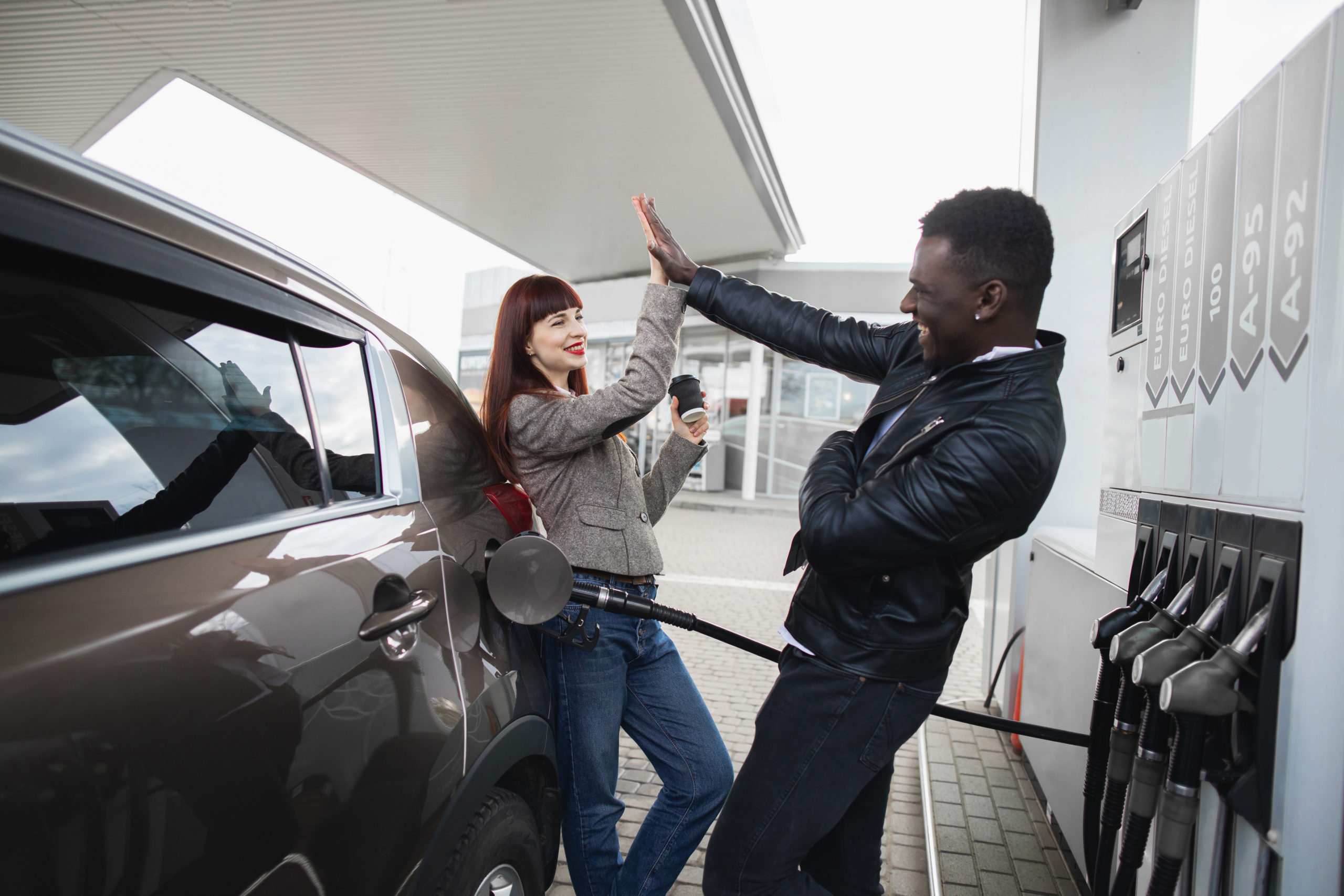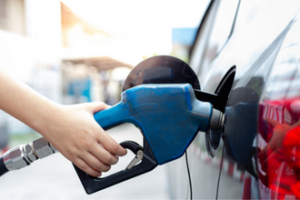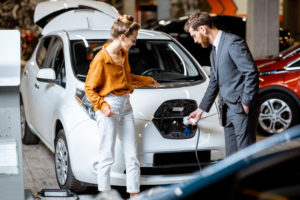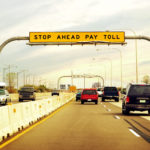
Driving prices: How to make your fuel dollars go further
Last updated on July 1st, 2022
Holding your breath every time you head to the petrol station? Wondering whether to fill up or just put in $20 and hope the price takes a dive within the week?
There’s no question we’re all feeling the pinch at the pump. According to the Australia Institute of Petroleum, the national average petrol price as of 20 March 2022 was 197.6c and 202.4c for diesel. The trend has been going up since 27 December 2021, with only a slight dip on 31 January this year. The price of fuel is expected to drop in the coming weeks due to a cut in fuel excise but we are yet to see the impact.
That means, based on the 2020 average rate of fuel consumption per vehicle 11.1 litres per 100km, we are now spending about $22.47 per 100km, a huge jump from the $14.40 in 2020.
No one likes to see the price of petrol creeping up week after week. But what can we do about it? It’s true, we can’t control the price. But there are practical ways to make your fuel dollars go further – not just now, but into the future. So whether petrol prices are going up, down or sideways, you can be prepared and take action.
Why are fuel prices so high?
The pandemic has had a significant impact on the global economy. Which has been felt by all Australians, especially when it comes to petrol prices. In a country where more than 92 percent of the population drive, that means no matter what you earn, you have a car to fill up.

The recent tensions between Ukraine and Russia have also increased the price of crude oil. This has had a dramatic effect on Australian petrol prices because we are a net importer of crude oil, with only around 12 percent of refinery feedstock produced domestically.
It is difficult to predict the future movements of petrol prices. They are influenced by a number of global factors. However, if you are looking to save money on fuel no matter the price at the pump, the first thing you need to do is understand the fuel cycle.
What is the fuel price cycle?
The fuel price cycle is the pattern of petrol prices rising and falling over time. It is mostly influenced by the deliberate pricing policies of petrol retailers. Which incorporates a number of factors such as the price of crude oil, the cost of refining crude oil into petrol and diesel, state and federal government taxes, and the strength of the Australian dollar. Note that prices are not directly related to changes in wholesale costs.
The duration of petrol price cycles in major cities varies but has increased in recent years. The typical fuel price cycle looks like this:
-
- Prices start to rise in anticipation of increased demand
- Prices continue to rise as demand increases
- Prices peak as demand reaches its maximum
- Prices start to fall as demand begins to ease
- Prices continue to fall as demand decreases
- Prices bottom out as demand reaches its minimum
A price cycle is a strategy companies employ to maximise their profits. While also giving motorists the chance to shop around for a discounted price on a weekly basis. So even when external factors push petrol prices up, companies will compete for your fuel dollars.
These price cycles can mean variations of 30c or more at the pump across a city’s suburbs on the same day, according to Peter Khoury, from the National Roads and Motorists Association in NSW.
It’s different for people living in regional areas. Because they rely much more on their cars to get around and don’t have the luxury of switching to public transport.
How to save on fuel
Here are a few things you can do, whether prices are going up or down.
Drive smart
Make your vehicle work better for you. This means keeping it in good condition and driving smoothly. Here are the 10 commandments of fuel efficiency:
1) Accelerate wisely
The rule of thumb is when driving around town, keep a steady speed; when driving on freeways, use cruise control if your car has it. Instead of pressing the accelerator, gradually increase speed and drive at a smooth, even pace. For optimum efficiency, accelerate your car from 0 to 15 km/h in five seconds. This will dramatically decrease fuel consumption by 15 percent.
2) Don’t feel the need for speed
The faster you drive, the more fuel you burn because the more aerodynamic drag is applied to your vehicle. Feeling like you're a member of The Fast and The Furious might give you a kick. But your engine doesn’t like it. Most vehicles begin to lose efficiency at speeds above 100km per hour. Driving your car at 120km per hour uses about 20 percent more fuel than driving it at 100km per hour.
3) Reduce idling
When your car is idling, it's still using fuel. If you're stopping for more than 30 seconds (such as waiting at a drive-thru), turn off your engine until it's time to move again. This decreases your fuel consumption by 10 percent or more.
4) Use your car’s air conditioner sparingly

The air conditioner is a gas guzzler. When driving around town, open your windows and enjoy the breeze instead. On hot days, avoid using the AC until you're on the freeway where rolling down your windows would significantly increase drag.
5) Get the right tyre pressure
Keep your tyres inflated to the correct pressure, as this can improve your fuel economy by up to four percent. According to the NRMA, depending on the amount of weight, there will be a minimum and maximum pressure recommendation - use the maximum. A good rule of thumb is to add 2psi to the manufacturer's recommended tyre pressure, in order to compensate for temperature and pressure changes. You can find the recommended pressure either on a label inside one of the front door openings or in the owner’s manual.
6) Avoid heavy loads
Carrying around a lot of unnecessary weight in your mid-sized car can use up to an extra one percent fuel for every 25kg it carries. So, before you hit the road, make sure you don't have any unneeded items taking up space in your trunk.
7) Drive less
You can save money by planning your trips. This means combining errands into one trip to avoid making multiple short trips that use up more fuel. You can also carpool or use public transport where possible.
8) Brake gently
Slamming on the brakes causes your car to lose speed quickly. And then you have to use more fuel to accelerate again. Try to slow down gradually by taking your foot off the accelerator a few seconds before you need to stop. This can save you around 20 percent on fuel consumption. If you live in an area with hills, try coasting down the hill instead of using your brakes.
9) Maintain your car
Keep your car in good condition by regularly checking the oil level and tyre pressure, and getting it serviced as required. This will help to improve your fuel efficiency and also prevent more expensive repairs down the track.
Checking your car's air filter is also important. A dirty air filter can reduce your engine's power and increase fuel consumption because it's making your engine work harder.
Finally, if you're in the market for a new car, choose one that has good fuel efficiency. Fuel-efficient cars can save you up to $1188 per year compared with gas guzzlers.
10) Choose the right fuel
If you're not sure what the best fuel is for your vehicle, check your car's manual or ask a mechanic. Generally speaking, premium petrol is only necessary for high-performance cars that specifically require it.
You may have heard of Ethanol-blended petrol (EbP), commonly known as E10, which is a fuel that contains between 9 and 10 percent ethanol. In recent years, the use of EbP has become more common in Australia as a way to reduce emissions and reliance on imported oil.
While EbP is generally safe for most cars, it's important to check whether your car is compatible first — check your car manual or contact the manufacturer.
If you're not sure, stick to regular unleaded petrol (ULP). While EbP is cheaper than ULP, it doesn't actually save you money in the long run because it has a lower energy content, meaning you need to use more of it to travel the same distance.
Explore alternatives
Of course, the best way to save money on fuel is to find an alternative mode of transport. This includes walking, cycling, taking public transportation or carpooling, provided your home and/or workplace makes any of these realistic options. You want to cut down your fuel consumption, not add to your stress levels. Even if you only choose an alternative way to get to and from work, or to take the kids to school, a few times a week, you’ll save a lot of money on fuel — and it will also be better for the environment.
Consider a hybrid vehicle
Hybrid vehicles use both an electric motor and a petrol engine, which means they're more fuel-efficient than traditional petrol or diesel cars.
While hybrid vehicles can be more expensive to buy than traditional cars, they can save you money in the long run because you'll use less fuel.
There are different hybrid car models to suit your budget and size preference. The main brands are Toyota, Subaru and Lexus. Aside from their fuel efficiency, they emit fewer emissions than traditional petrol or diesel cars.
They also have regenerative braking, which means they convert some of the energy from braking into electricity to recharge the battery. This helps to improve fuel efficiency even further.
One of the main drawbacks is that they can be more expensive to purchase than traditional petrol or diesel cars. They can also be less powerful, which means they might not be suitable for everyone, such as people who do a lot of country driving.
Finally, hybrid cars still rely on petrol or diesel, so you still have to pay the price at the pump, and they're not entirely emissions-free.
What about going fully electric?
For an even more fuel-efficient and environmentally friendly option, consider going fully electric.
Electric cars are powered by electricity from batteries, which makes them much more efficient than petrol or diesel cars. They also have zero emissions, which is great for the environment. Although some argue that the power needed to recharge batteries still requires fossil fuels, greenhouse gas emissions can be eliminated if EVs are charged using renewable energy.

However, electric cars can be expensive to buy and may not be suitable for long-distance travel because of the lack of charging stations. At the current fuel price, however, EVs are definitely worth considering, and some states are even offering incentives to do so.
According to Jake Whitehead, Research Fellow at the University of Queensland and member of the International Electric Vehicle Policy Council, the long-term savings EVs offer really add up.
“With petrol prices now pushing past $2 per litre, many Australians will find themselves paying more than $2000 in fuel each year for every car they own,” he writes in The Conversation. “Electric vehicles can be charged for the equivalent of around $0.20 per litre, or even cheaper when using your home solar. These savings add up, totalling more than $20,000 over the life of the vehicle."
EVs are also apparently cheaper to maintain, which means more savings. You just have to know how to choose the right brand and model.
Conclusion
Even though we know that everyone is feeling the pinch at the bowser right now, use this wake-up call as a time to take stock of your fuel consumption in general. Rethink how, and how much, you use your car and you’ll not only save money now but into the future.
If you’re having trouble with price gouging or other fuel-related issues, make a complaint with us.






